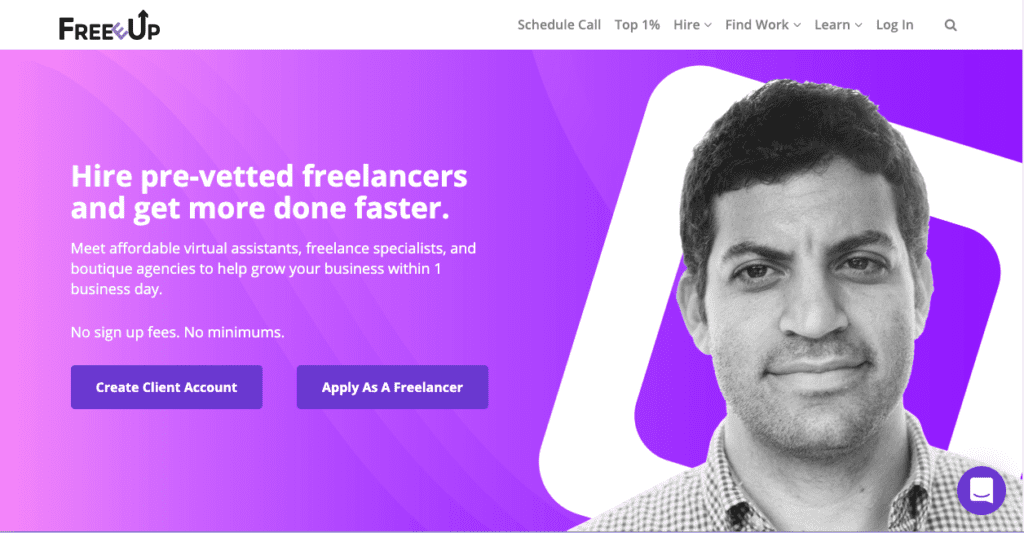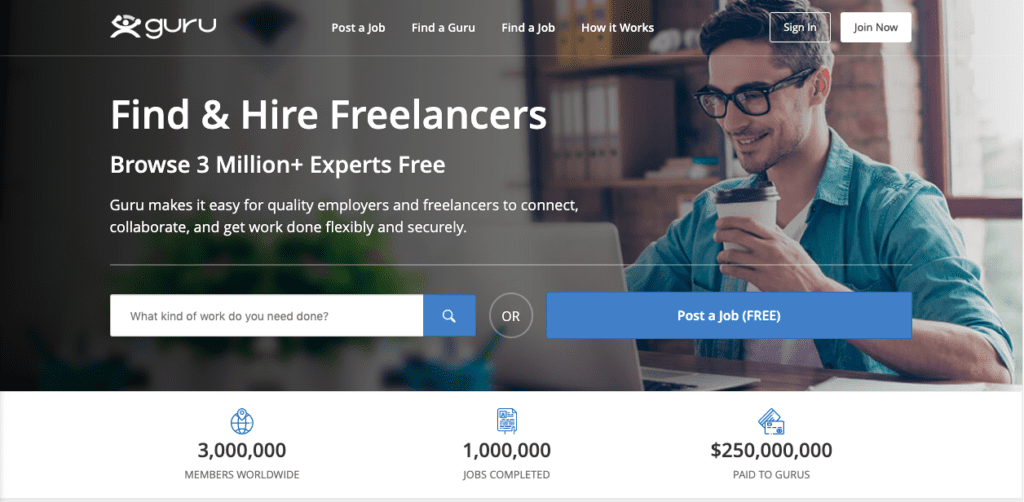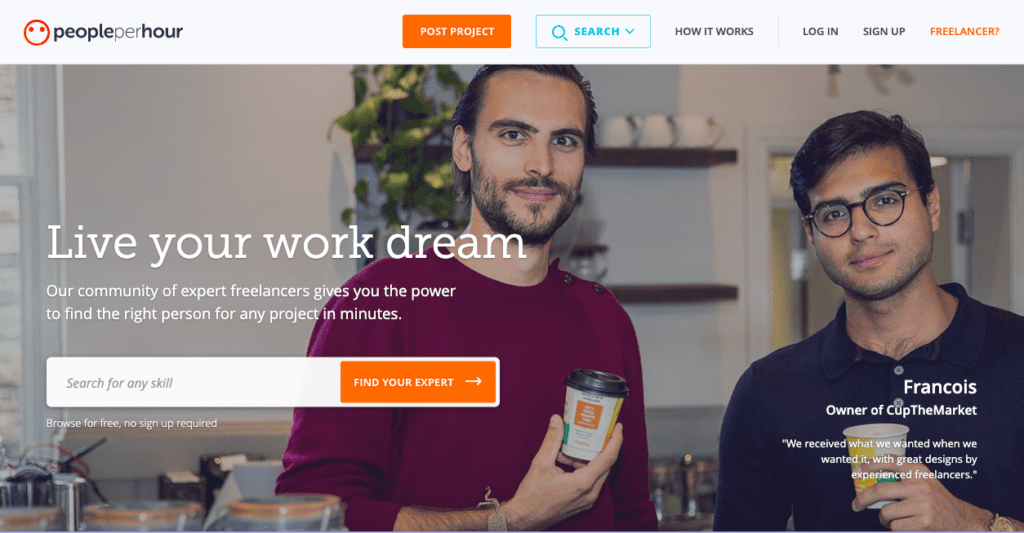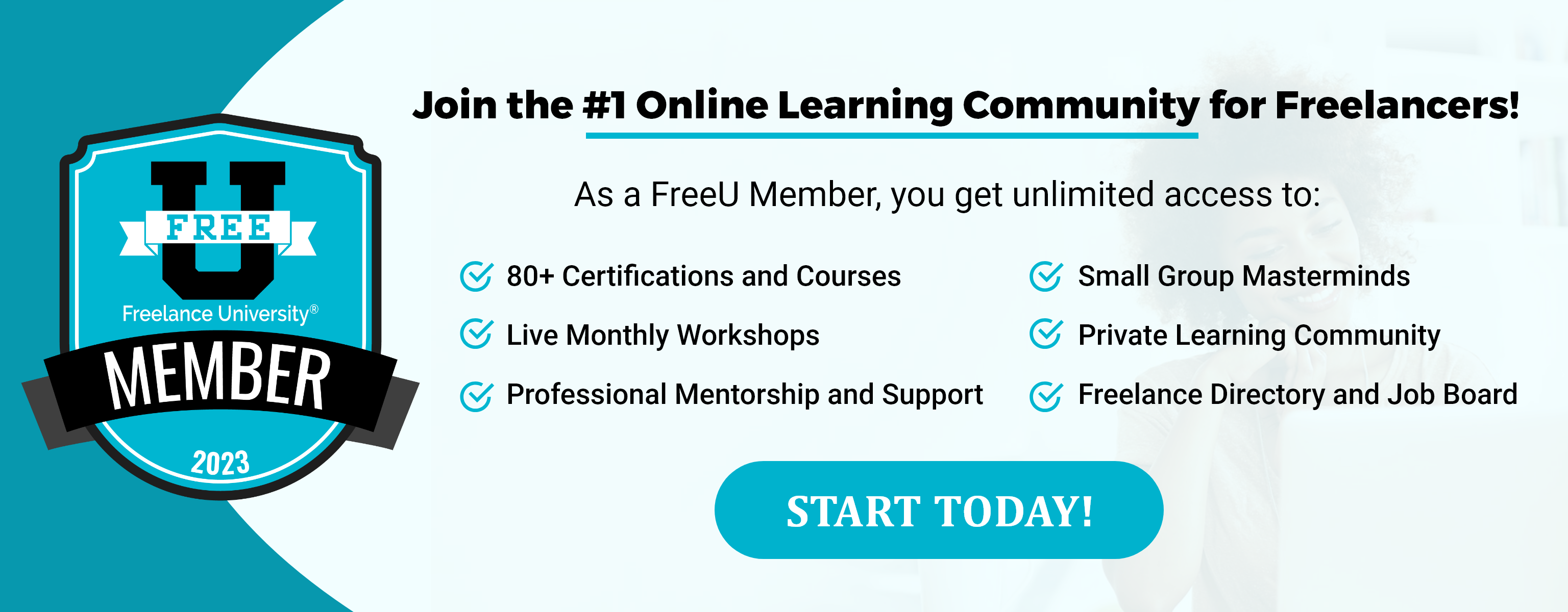Your Guide to Five Top Marketplaces to Finding Work as a Freelancer
By Jena Kroeker
According to a press release on Upwork’s 5th Annual Report, “Freelancing in America 2018,” more than three in four freelancers report that technology has made it easier for them to find freelance work, with 64% of freelancers finding work online, up by 22 points since 2014.
These statistics are encouraging because, as many of us know, one of the biggest challenges for freelancers is finding work. But referrals, networking, social media, email, and content marketing are effective strategies we can turn to.
And so are freelance marketplaces; however, some freelancers shy away from these sites because they see them as a saturated market full of low-priced jobs that won’t sustain them and their families. In this guide, we’ll dispel some of those myths and look closer at five top marketplaces where you can start finding work as a freelancer.
How to Approach Freelance Marketplaces
Craig Cannings, co-founder of Freelance University, recently spoke with Winton Churchill, the founder of Barefoot Consultants, in our recent podclass episode, “The Winning Clients With Upwork Class with Winton Churchill.”
Winton has some eye-opening advice on how to approach freelance marketplaces. He says that it’s not a case of going in and bidding on a job every day to get a new client. Instead, he recommends cultivating three to six clients that you can work with on an ongoing basis.
He explains,
“Most of the jobs you see in these networks are ‘audition’ jobs. They’re jobs where somebody wants to get a sense of who you are and do you know your stuff.”
For example, some companies may give the same article writing job to five different people and pick the person they like the best, the one who can write for their audience. That person may then be asked to write for them regularly.
So, Winton says the secret is “you don’t so much want to look at jobs; you want to look at the client for ongoing potential.” He recommends bidding on small 1- or 2-hour assignments “that you could probably do in your sleep.”
And, as Craig Cannings says, you have to approach freelance marketplaces like Upwork with the mindset that although one small project won’t feed your family, it could possibly turn into a long-term relationship that pays you monthly over a long period of time.
With that in mind, here’s a Guide to Five Top Marketplaces to Finding Work as a Freelancer:
Upwork – https://www.upwork.com/

Screenshot via https://www.upwork.com/
With Upwork, you can maintain your status as a business owner and select your own clients and projects from a wide variety of categories like Web, Mobile, & Software Dev, Writing, Customer Service, Admin Support, Sales & Marketing, and more. When you complete your profile, Upwork will use an algorithm to highlight projects you may be suited for. You can also search for projects yourself and respond to invitations from clients by sending a proposal.
Upwork provides an online workspace you share with your client, allowing you to receive and send files, and communicate via video, chat, or text through Upwork Messages. You can also download a mobile and desktop app to access features. A desktop app lets you track your time for hourly projects, billing your client automatically. And for fixed price projects, you can set milestones and deadlines for each part of a project.
Payments and invoices are managed through Upwork, with multiple payment options. The website describes the sliding fee freelancers are charged based on lifetime billings with each client:
“20% for the first $500 you bill your client across all contracts with them
10% for total billings with your client between $500.01 and $10,000
5% for total billings with your client that exceed $10,000”
Upwork also charges $0.15 per Connect, which is the feature you use to submit a proposal for job postings. According to the website, the typical monthly cost for Connects is $5, and it’s possible you may use between one and six Connects to submit your proposal.
FreeeUp – https://freeeup.com/

Screenshot via https://freeeup.com/
FreeeUp is a rapidly growing freelance marketplace that allows you to set your own fixed or hour rate for more than 85 different skill sets. Some options are Ecommerce, Web Design, Content Creation, Admin Support, Accounting, and more. In a recent guest post on our FreeU blog, Connor Gillivan, the CMO and co-owner of FreeeUp, provides some valuable tips on “How to Select a Niche Focus for Your Freelance Business” that can help you prepare for marketplaces like this.
To become a part of FreeeUp, you first need to submit a freelancer application, and within one or two days, you’ll find out whether you’ve been granted an interview.
If your interview is successful, you’ll then be required to pass a test on your knowledge of FreeeUp’s Best Practices and Terms of Use. After that, you’ll gain access to the community, where you can set up your account and payment method.
FreeeUp lets you browse an Open Projects Board within your account and apply to projects. You can interview with clients as projects become available and then be hired through your FreeeUp account.
Clients are billed each Thursday, and freelancers are paid the following Thursday to the bank account you’ve set up on your FreeeUp account.
Freelancer – https://www.freelancer.com/

Screenshot via https://www.freelancer.com/
Freelancer is another marketplace, similar to Upwork, that offers 1350 different categories of jobs, including Website Design, Internet Marketing, Article Writing, SEO, Graphic Design, and more. To be matched with relevant jobs, simply fill out your profile and indicate your skill sets.
By optimizing your filters, you can browse jobs, save your search, and be notified when relevant jobs are available. You can then write a pitch to bid on projects and receive secure payments through your Freelancer account. This site also gives you the option of requesting Milestone Payments.
According to the Support page, freelancers are charged fees as follows:
“Hourly projects: 10% of the payment released to the freelancer is charged as fee.
Fixed-price projects: 10% of the winning bid or $5 USD (or its approximate equivalent in other currencies) — whichever is greater — is collected when the awarded freelancer accepts the project. Each subsequent payment to the freelancer in excess of the original bid amount will incur a 10% project fee.”
A mobile app and desktop platform are available to help you work with clients. Another cool feature is the ability to join contests to help you earn reviews and prizes. You can also try submitting your work for the Freelancer Showcase, where clients can hire you directly if they like the look of your showcased projects.
Guru – https://www.guru.com/

Screenshot via https://www.guru.com/
Guru offers a selection of more than three million professional services provided by programmers and developers, designers and artists, writers and translators, sales and marketing gurus, and many other specialists.
To get started, simply create a free Freelancer account and profile. You can then submit quotes to open jobs and ask questions on a public question board for each job post. Clients will review your quotes, communicate with you, and decide whether or not to hire you.
Clients and freelancers then collaborate on an agreement, chosen from four different types that can be customized:
• “Pay by Milestones”
• “Pay by Task”
• “Pay by Hour”
• “Pay using Recurring Payments”
Guru also has a SafePay feature that can be used to receive payments. The agreement you make with a client can define that a minimum SafePay balance be available throughout the duration of the project, so you can see that the client has funds to pay you. Invoices can be paid automatically or manually.
According to the Guru Help page, a variety of memberships are available, starting with a basic level for free, and paid levels starting at $8.95/month billed annually. The paid memberships provide more bids and lower job fees.
PeoplePerHour – https://www.peopleperhour.com/

Screenshot via https://www.peopleperhour.com/
PeoplePerHour is a UK-based service that offers access to an exclusive freelancer community. To get started, you need to complete an online application that will be reviewed by a moderation team. Upon approval, you have access to projects from a worldwide community of clients.
On your PeoplePerHour profile, you can define your skills, share your career experience, tell your story, and share work examples in your portfolio. Clients will browse your profile, and PeoplePerHour’s artificial intelligence system will match you to projects relevant to your abilities. You can also search for projects on your own or save automatic searches and be notified when new projects are added. You can send 15 proposals per month free of charge, and buy additional credit if you’d like to submit more proposals.
One great feature is the ability to sell custom services with self-tailored offers. Project streams provide a “collaboration hub” where you can communicate with your clients, gather feedback, and send invoices.
Your payment is protected since clients are required to pay a deposit into an escrow account when your proposal is selected. Once you complete a project and submit your invoice, the client authorizes the payment, moving funds from the escrow account to your PeoplePerHour account.
According to the PeoplePerHour Help Centre, PeoplePerHour memberships are free, allowing you to search for work and promote your services. A service fee is charged when clients pay your invoice, and other optional features can be purchased.
Final Thoughts
So, there you have it – Your Guide to Five Top Marketplaces to Finding Work as a Freelancer! In the podclass episode mentioned above, Winton Churchill recommends focussing on just one marketplace. And he encourages freelancers to persevere, saying, “It’s like trying to jump on a moving merry-go-round.” People may bid on 10-20 projects before they get their first job.
But don’t be afraid to take that leap and jump on the merry-go-round. The future is bright for freelancers, and technology has provided many opportunities to find work online.
Now we’d love to hear your thoughts! Please share any tips or questions you have about freelance marketplaces in the comments below.










































































































